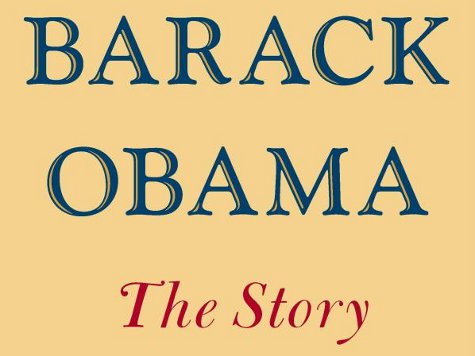Sometime the media makes a mistake and accidentally reveals too much. Take a gander at these truths we learn–and some we didn’t–from David Maraniss’s book, Barack Obama: The Story.
1. He told classmates he was an Indonesianprince. “His grandfather [Stanley] had told strangersthat the boy was a descendant of ali ‘i, native Hawaiian royalty. In Obama’slater memoir, he recalled boasting at Punahou that his father was an Africanprince. Some classmates remembered it differently, that first he claimed hisfather was an Indonesian prince” (p. 268).
2. Far from the poverty that Obama describesin Dreams, Obama hobnobbed with richIndonesians. “Barry’s new classmates [at Besuki Schoolin Indonesia] included the sons and daughters of lawyers, bankers, doctors,members of Parliament, and government officials” (p. 235). While his home may have been modest, his education in Indonesia certainly wasn’t.
3. Everyone, including the now-Governor ofHawaii, acknowledges that Obama got into Punahou in large part because he wasblack and connected. Obamawrites that he got in thanks to Gramps’ boss. “My first experience withaffirmative action, it seems, had little to do with race,” Obama wrote in Dreams, p. 87). But Maraniss delivers a more detailed picture:
Basedon his background alone the boy “never would have gotten into Punahou–not in amillion years,” said Neil Abercrombie [current governor of Hawaii, friend ofBarack Obama Sr.]… But Barry made the select cut when more than nine out of tenapplicants could not. He got in due to several converging factors, includingthe persistence of his mother, who was tireless at working the system, evenfrom afar; his own winning performance during interviews with the admissionsoffice; a need-based scholarship programthat has begun targeting students of his potential and diverse background;and the influence of two wealthy alumni. [p. 265, emphasis added]
It would appear that race was a factor–at least a partial one.
4. Maraniss says ‘Pop,’ a poem that Obamawrote for Occidental’s literary magazine, was about Frank Marshall Davis. This revelation comes twoyears after Jack Cashill wrote about it (p. 382).
5. Maraniss’s description of Frank Marshall Davisis laughable. He writesof FMD: “already approaching seventy, a black journalist, poet, civil rightsactivist, political leftist, jazz expert, and self-described ‘confirmednonconformist’ who wore a gold earning in his pierced right ear and had beenunder surveillance by the Honolulu bureau of the FBI because of his pastassociations with the Communist Party” (p. 270). In fact, thanks toPaul Kengor’s indispensable book, TheCommunist: Frank Marshall Davis, we know that he was an unrepentant Marxistwho continued to peddle his ideology well into his eighties.
6. Maraniss has contempt for those of us whowant to vet the president even when his profession won’t, calling us “strange armies ofideological pseudohistorians” who “roam the biographical fields in search ofstray ammunition” (p. xxiii).
7. Even when he was young, Obama knew the power of manipulation with words. Inhis English class at the prestigious Punahou School, the discussion turned towhat people should most fear. “The answers included loneliness, death, hell,and war. Then Barry straightened up… ‘Words,’ he said. ‘Words are the power tobe feared most… Whether directed personally or internationally, words canbe weapons of destruction'” (p. 300).
8. How did Obama get into Columbia, anyways?Obama’s grade pointaverage was a “B-plus” at Occidental. Maraniss gives no indication of whetherthat was a good or bad grade point average at that particular school. He doesn’t take upseriously the question of whether or not Obama got into Columbia withoutrevealing his grades at all. Worse yet, he charges racism against those of us who ask for empirical evidence (i.e. his grades or test scores) that Obama is a genius.
9. The strange case of Obama’s admittance toColumbia. “He and Boerner[his room mate] and Kofi Manu, acting independently but aware of each other’sdecisions, had filled out applications to transfer to Columbia in New York”(p. 385). But Obama claims in Dreams that he applied through aBreitbart News has debunkedthe existence of such a transfer program. Why didn’t Maraniss explain?
10. Maraniss ignores the politics of the Black Students Organization, who were well known on campus for being radical. In fact, photographic evidence from Obama’s time shows five members of the black students organization raising their fists in the famous gesture of black power: the raised fist in the air.” This photo in and of itself wouldn’t be so revealing, but together with Obama’s later relationship with the controversial Reverend Jeremiah Wright, and the former terrorist Bill Ayers, it fits a pattern.

COMMENTS
Please let us know if you're having issues with commenting.